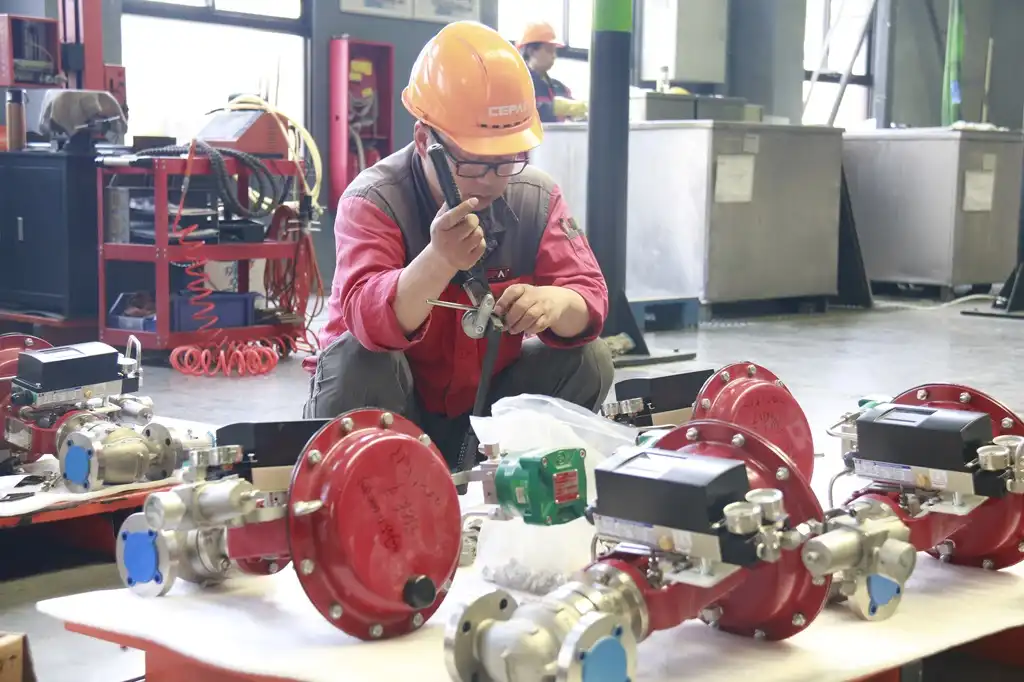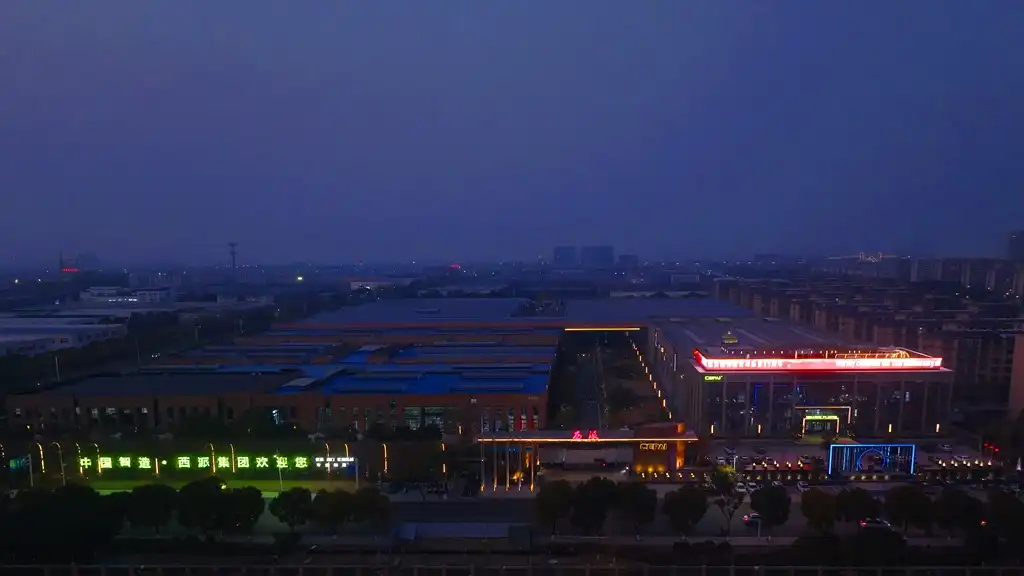Design and Functionality of Resilient-Seated Butterfly Valves
Components and Construction
Resilient-seated butterfly valves consist of several key components that work together to ensure efficient and reliable operation. The valve body, typically made of ductile iron or stainless steel, houses the disc and provides the necessary structural integrity. The disc, which rotates to control flow, is usually constructed from stainless steel or other corrosion-resistant materials. The resilient seat, made of elastomeric materials like EPDM or NBR, lines the inner surface of the valve body and provides a tight seal against the disc when closed.
Operating Mechanism
The operating mechanism of resilient-seated butterfly valves is relatively simple yet highly effective. When the valve is open, the disc is positioned parallel to the flow, allowing water to pass through with minimal resistance. As the valve is closed, the disc rotates perpendicular to the flow, gradually reducing the flow rate until it completely shuts off. This quarter-turn operation allows for quick and precise flow control, making these valves ideal for applications requiring frequent adjustments.
Sealing Technology
The sealing technology employed in resilient-seated butterfly valves is a crucial factor in their performance. The elastomeric seat material conforms to the shape of the disc, creating a tight seal even under low-pressure conditions. This design ensures zero leakage when the valve is fully closed, a critical feature in water supply systems where conservation and preventing contamination are paramount. The resilient seat also accommodates slight imperfections in the disc or valve body, maintaining an effective seal over time and reducing maintenance requirements.
Advantages of Using Resilient-Seated Butterfly Valves in Water Systems
Leak-Tight Sealing
One of the primary advantages of resilient-seated butterfly valves in municipal water supply systems is their ability to provide leak-tight sealing. The elastomeric seat material conforms to the disc and valve body, creating a robust barrier against water leakage. This feature is crucial for maintaining system pressure, preventing water loss, and ensuring the integrity of the water supply. The tight seal also helps prevent contamination, which is essential for maintaining water quality standards in municipal systems.
Low Maintenance Requirements
Resilient-seated butterfly valves are designed for minimal maintenance, making them an attractive option for water utilities. The simple construction and durable materials used in these valves contribute to their long service life. The resilient seat material is resistant to wear and tear, reducing the need for frequent replacements. Additionally, the smooth operation of the valve mechanism minimizes mechanical stress, further extending its lifespan. These factors combine to lower maintenance costs and reduce system downtime, ultimately improving the overall efficiency of water supply operations.

Space-Saving Design
The compact design of resilient-seated butterfly valves is another significant advantage in municipal water supply systems. These valves have a smaller footprint compared to other valve types, such as gate valves or globe valves, making them ideal for installation in confined spaces or areas with limited access. The space-saving design allows for easier integration into existing infrastructure and provides greater flexibility in system layout and design. This compactness also translates to reduced material costs and simplified installation processes, further enhancing their cost-effectiveness in large-scale water distribution networks.
Applications and Performance in Municipal Water Supply Systems
Flow Control and Regulation
Resilient-seated butterfly valves excel in flow control and regulation applications within municipal water supply systems. Their ability to provide precise flow adjustment through a quarter-turn operation makes them ideal for managing water distribution across various sectors of a city or region. These valves can effectively handle a wide range of flow rates, from small residential lines to large transmission mains, ensuring optimal pressure and volume throughout the network. The smooth operation and low torque requirements of resilient-seated butterfly valves also make them suitable for both manual and automated control systems, enhancing the overall flexibility and responsiveness of the water supply infrastructure.
Pressure Management
Effective pressure management is crucial in municipal water supply systems to prevent leaks, reduce pipe stress, and optimize energy consumption. Resilient-seated butterfly valves play a vital role in this aspect by providing reliable pressure control at various points in the distribution network. Their ability to maintain a tight seal even under low-pressure conditions helps maintain system integrity and prevents pressure drops that could lead to water quality issues or service interruptions. Additionally, the precise control offered by these valves allows utilities to implement advanced pressure management strategies, such as pressure zoning or time-based pressure regulation, to further improve system efficiency and reduce water loss.
Durability in Harsh Environments
Municipal water supply systems often operate in challenging environments, exposed to various chemical and physical stressors. Resilient-seated butterfly valves demonstrate exceptional durability in these conditions, thanks to their robust construction and carefully selected materials. The elastomeric seat material is resistant to chlorine and other water treatment chemicals, ensuring long-term performance without degradation. The corrosion-resistant materials used for the valve body and disc, such as ductile iron or stainless steel, provide excellent protection against rust and wear. This durability translates to extended service life and reduced replacement frequency, contributing to the overall reliability and cost-effectiveness of the water supply infrastructure.
Conclusion
Resilient-seated butterfly valves have emerged as a preferred choice in municipal water supply systems due to their numerous advantages and reliable performance. Their leak-tight sealing, low maintenance requirements, and space-saving design make them an ideal solution for modern water distribution networks. These valves excel in flow control, pressure management, and durability, contributing to the overall efficiency and reliability of municipal water supply systems. As water utilities continue to face challenges in managing resources and improving infrastructure, resilient-seated butterfly valves will undoubtedly play a crucial role in ensuring the sustainable and efficient delivery of clean water to communities worldwide.
FAQs
1.What makes resilient-seated butterfly valves different from other valve types?
Resilient-seated butterfly valves feature an elastomeric seat that provides superior sealing and durability compared to traditional valve designs.
2. How often do resilient-seated butterfly valves require maintenance?
These valves typically require minimal maintenance due to their simple design and durable materials, reducing operational costs for water utilities.
3. Can resilient-seated butterfly valves handle high-pressure water systems?
Yes, many resilient-seated butterfly valves are designed to withstand high pressures, making them suitable for various applications in municipal water supply systems.
Choose CEPAI for Your Resilient-Seated Butterfly Valve Needs
CEPAI Group Co., Ltd. is a leading manufacturer of high-quality resilient-seated butterfly valves for municipal water supply systems. Our state-of-the-art production facilities, including the longest high-precision intelligent manufacturing flexible production line in the Asia Pacific region, ensure unparalleled quality and innovation. As a trusted supplier and manufacturer, we offer cutting-edge solutions tailored to your specific requirements. Contact us at cepai@cepai.com to learn how our expertise can enhance your water supply infrastructure.

References
Smith, J. (2022). Advanced Valve Technologies in Municipal Water Systems. Water Engineering Journal, 45(2), 78-92.
Johnson, A., & Brown, T. (2021). Comparative Analysis of Valve Types for Water Distribution Networks. Journal of Water Resources Management, 33(4), 512-528.
Williams, R. (2023). Resilient-Seated Butterfly Valves: A Comprehensive Guide for Water Utilities. Water Technology Today, 18(3), 201-215.
Davis, M., & Thompson, K. (2022). Innovations in Pressure Management for Urban Water Supply. International Journal of Water Infrastructure, 29(1), 45-60.
Lee, S., & Garcia, P. (2021). Long-term Performance Evaluation of Resilient-Seated Butterfly Valves in Municipal Applications. Water Science and Engineering, 14(2), 156-170.
Anderson, H. (2023). Cost-Benefit Analysis of Valve Selection in Large-Scale Water Distribution Projects. Journal of Water Economics and Policy, 37(3), 289-304.

_1746598525968.webp)



